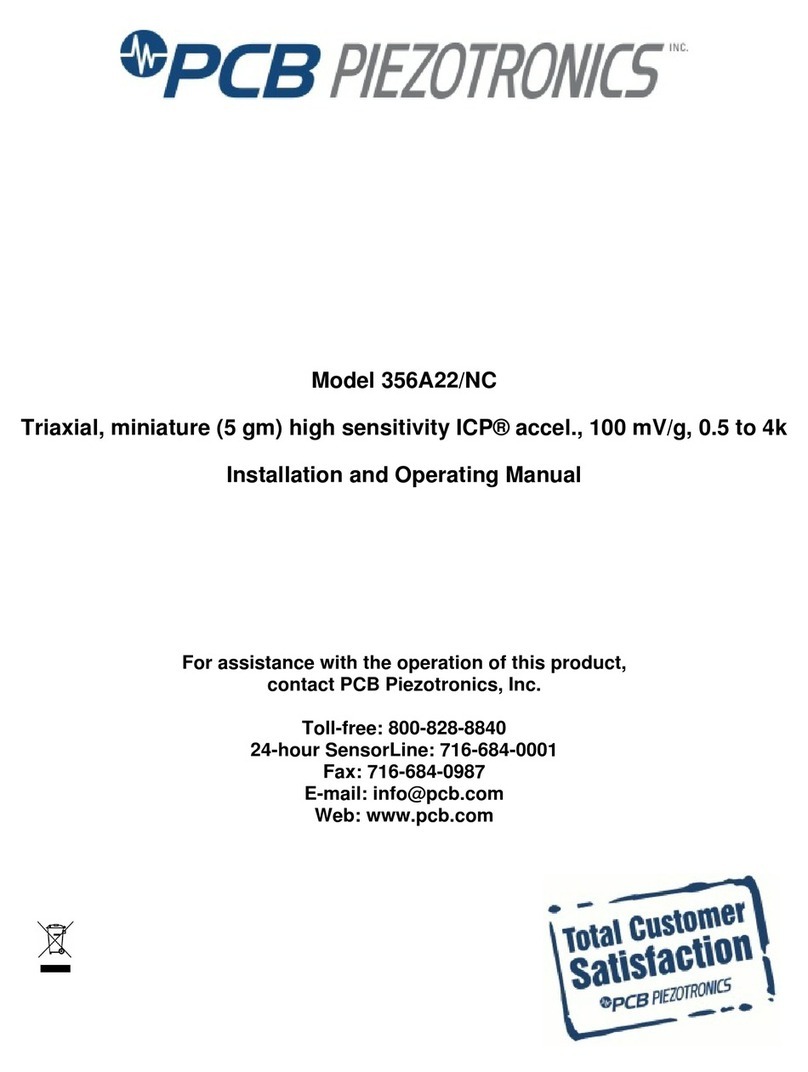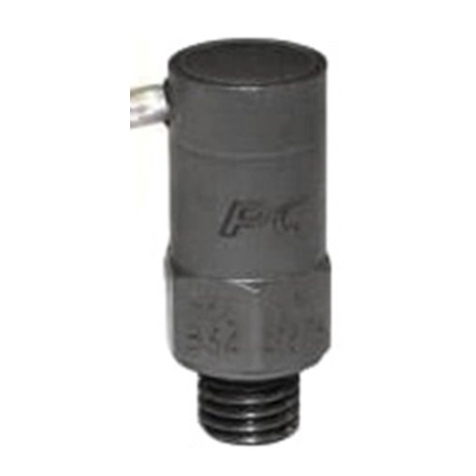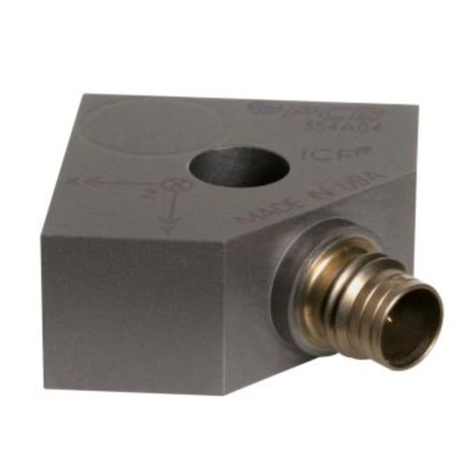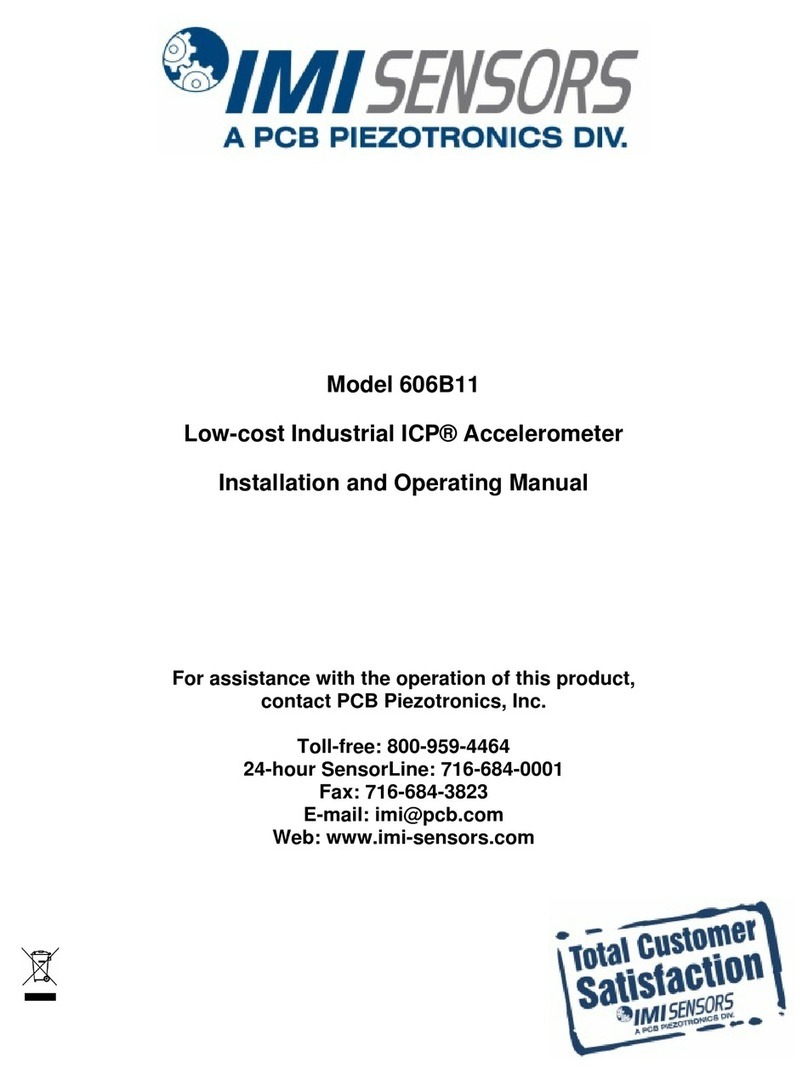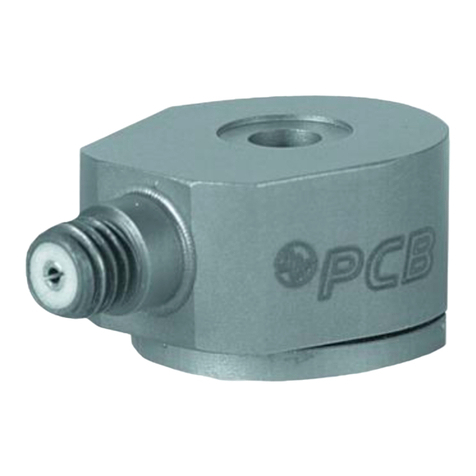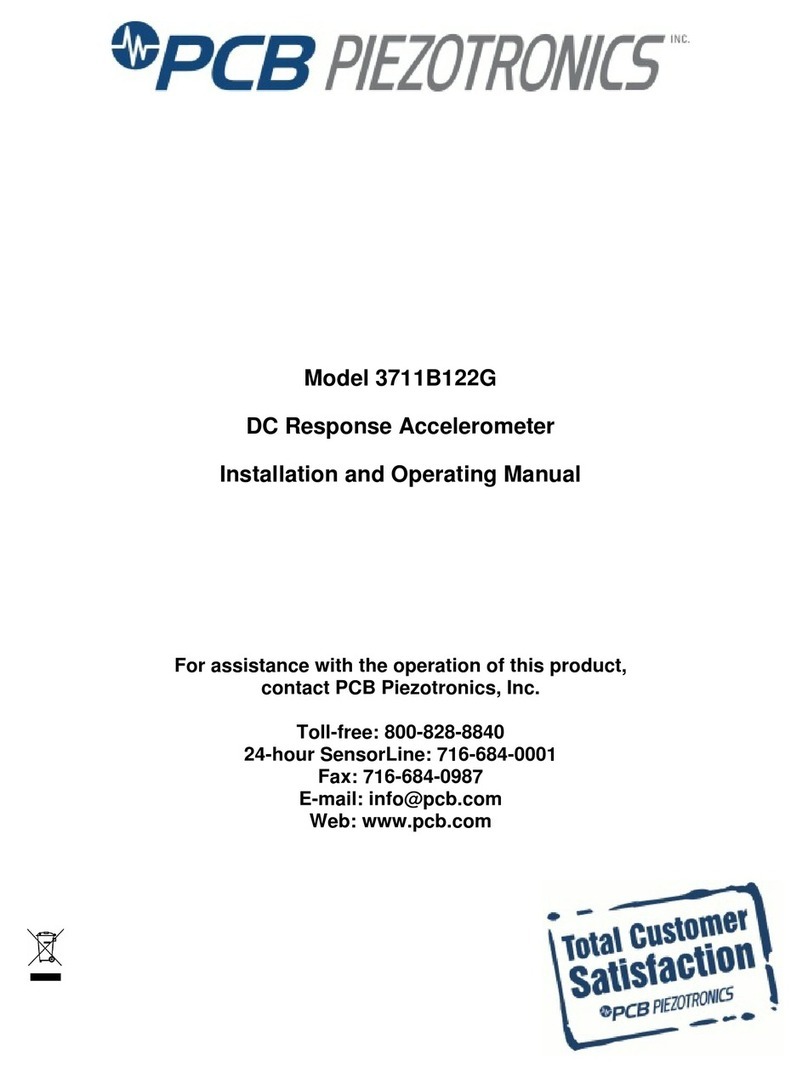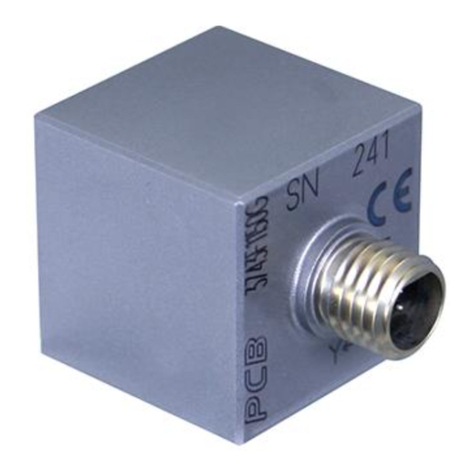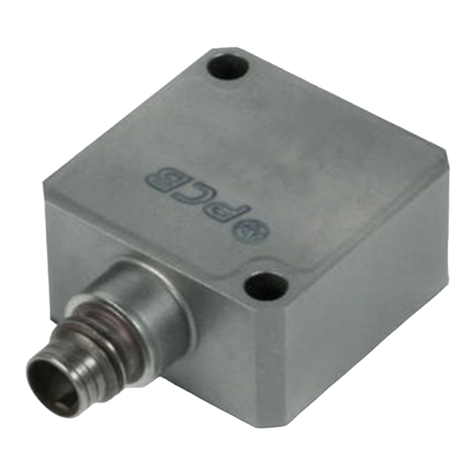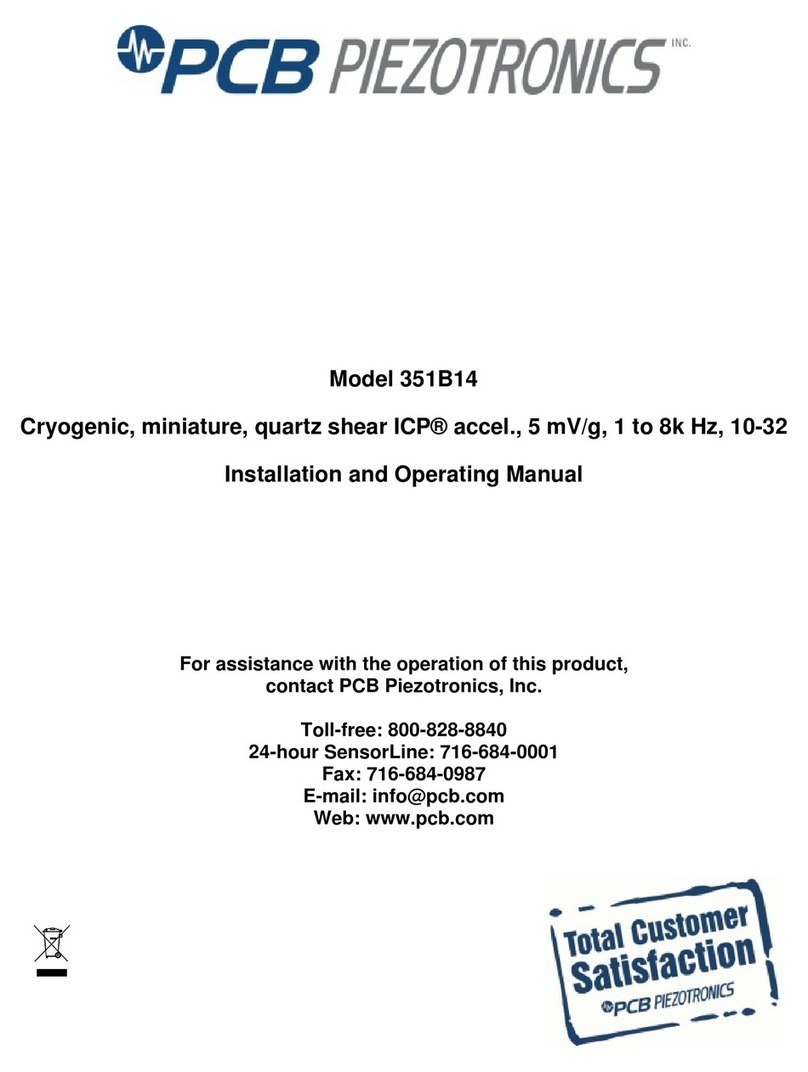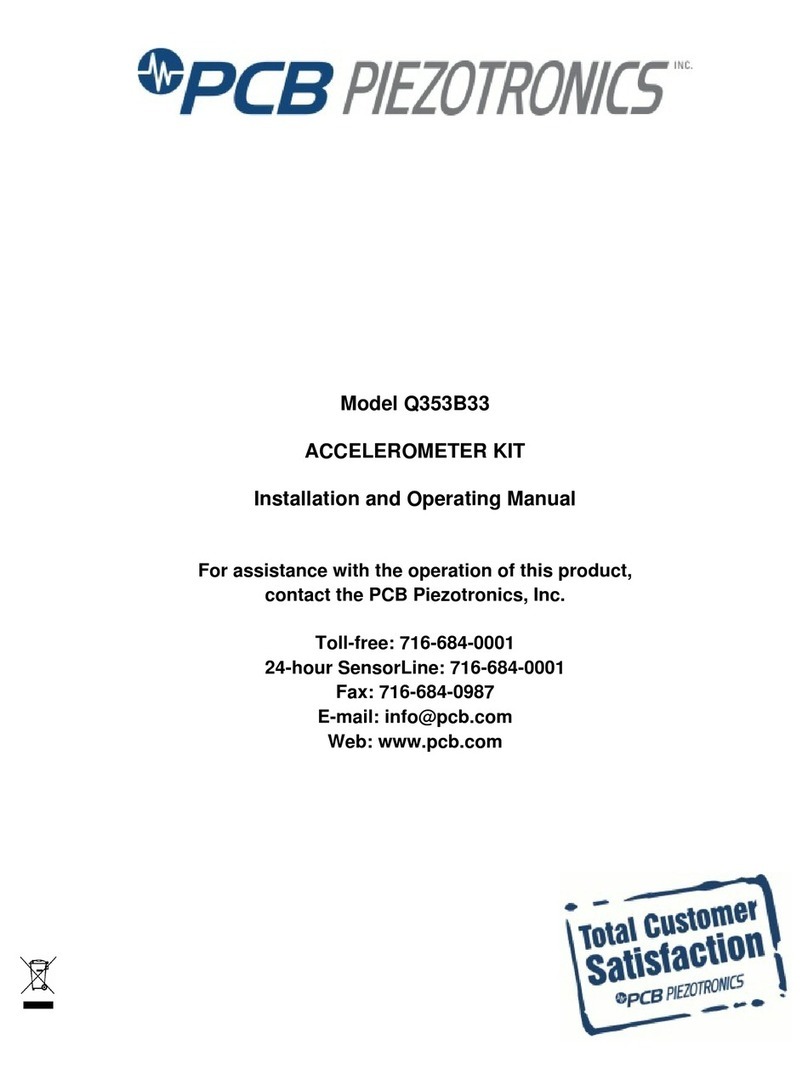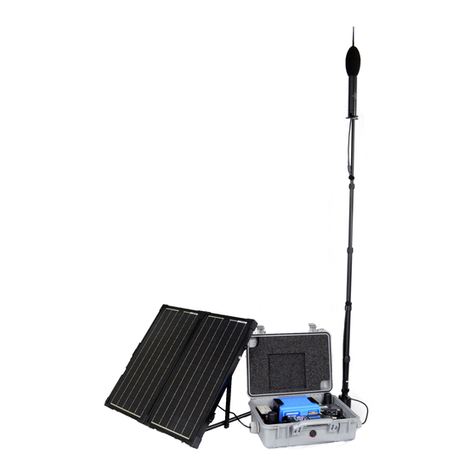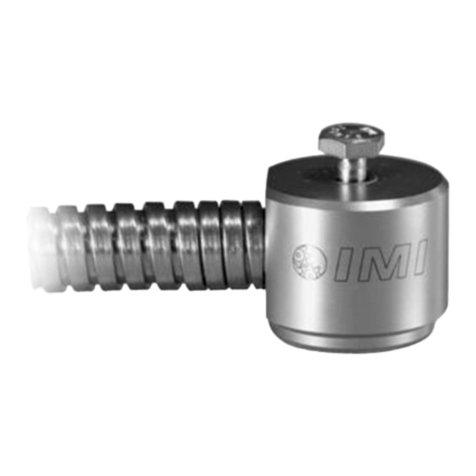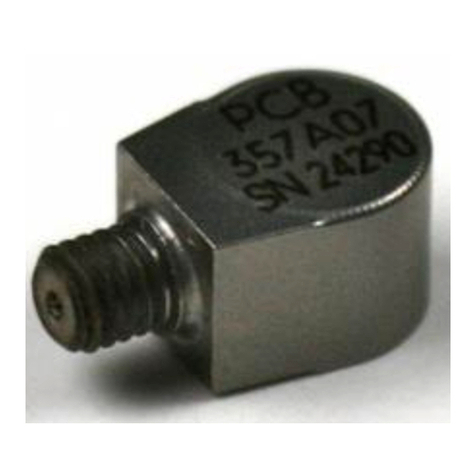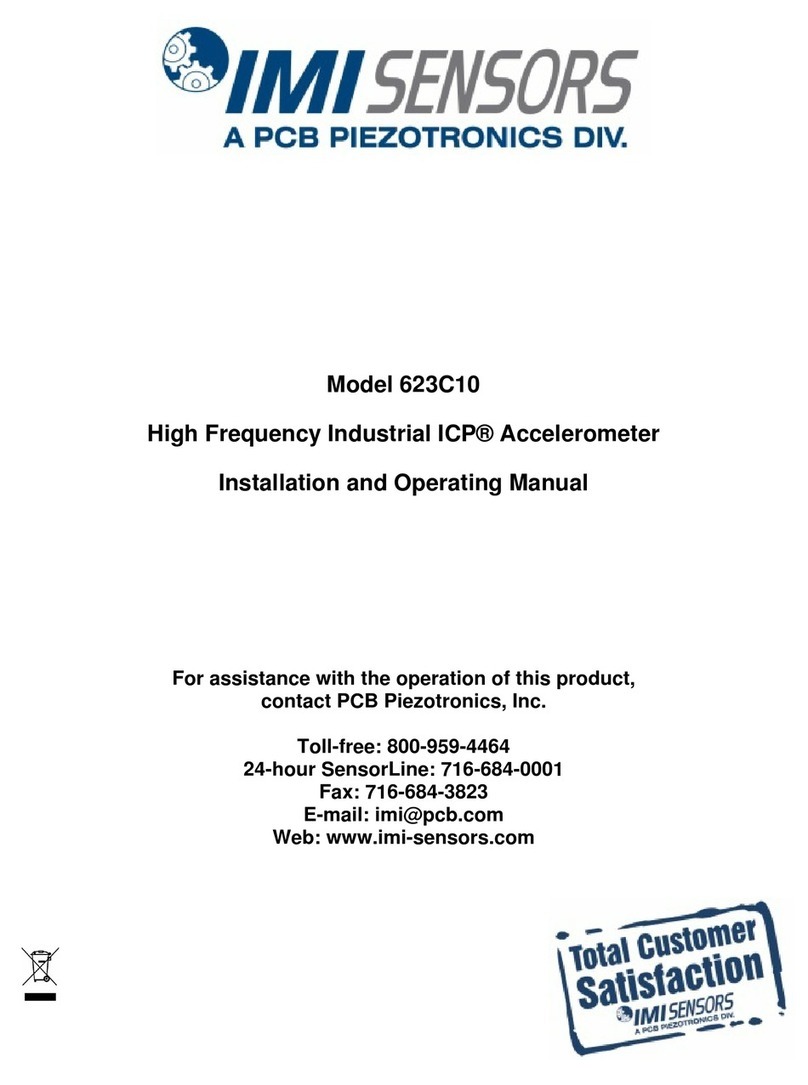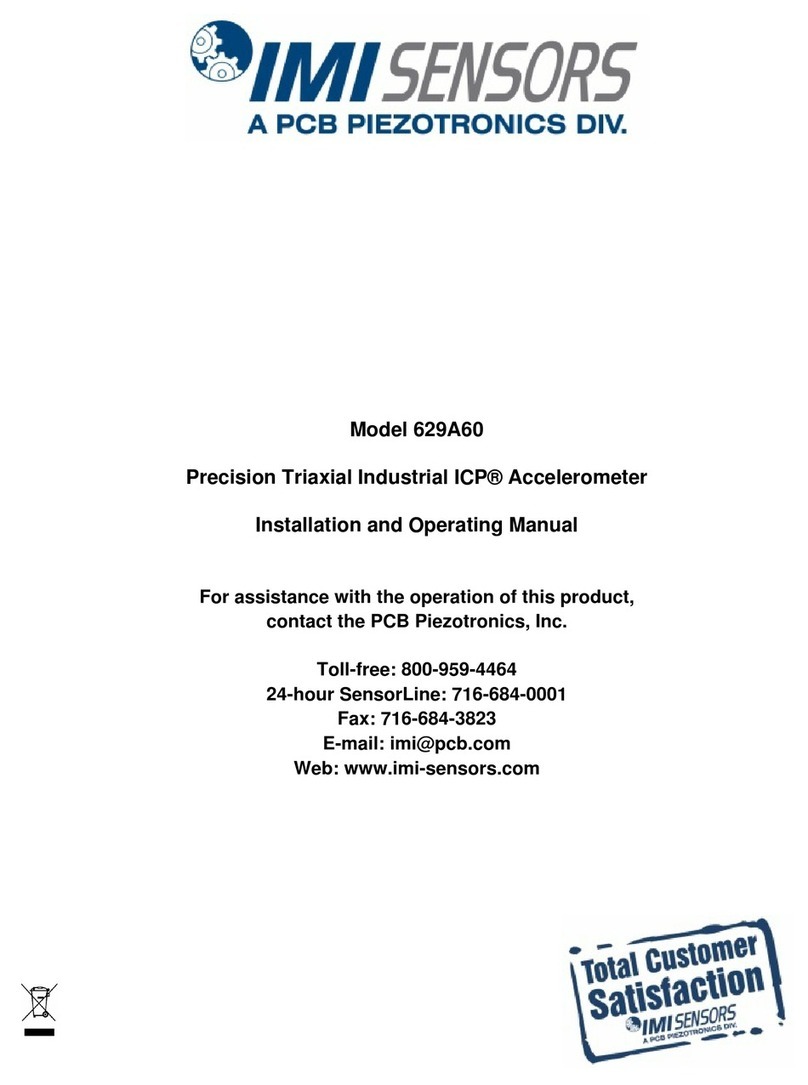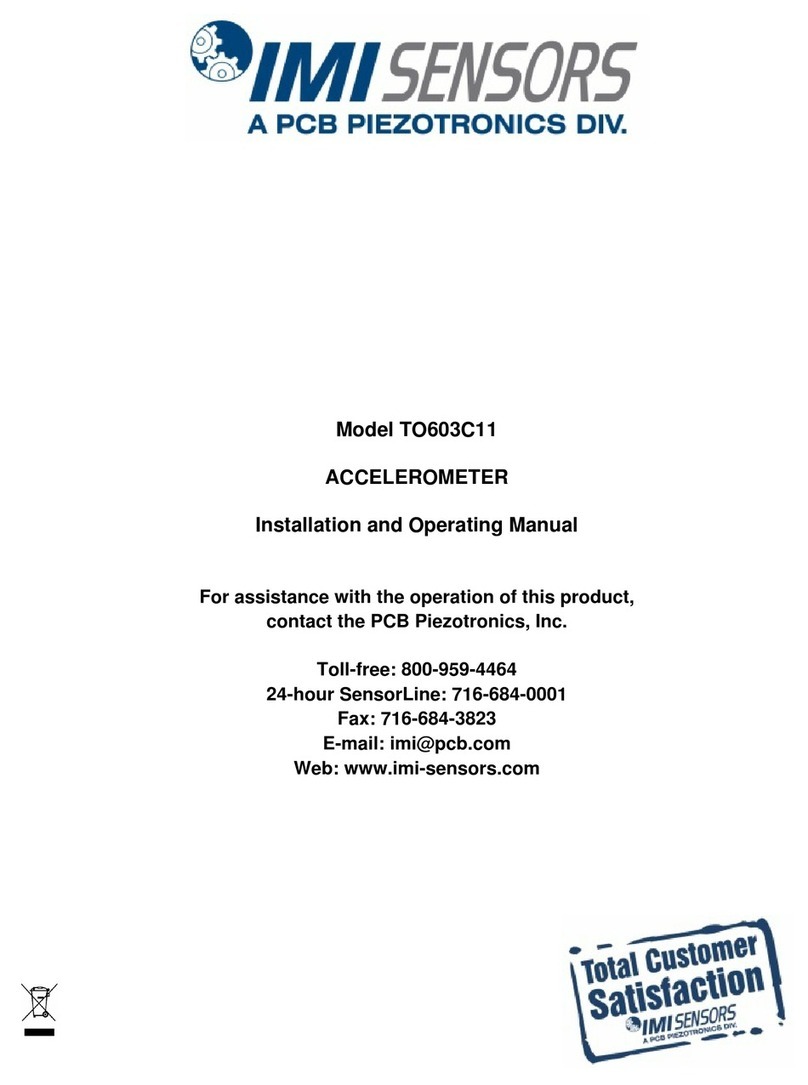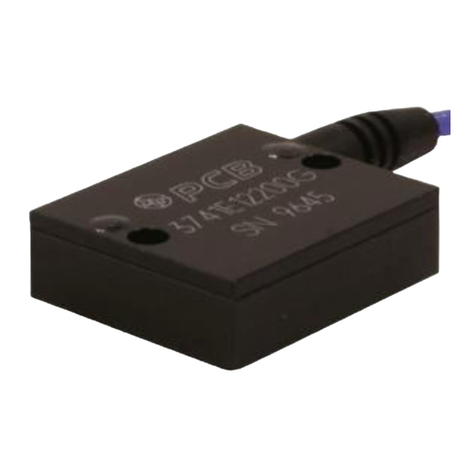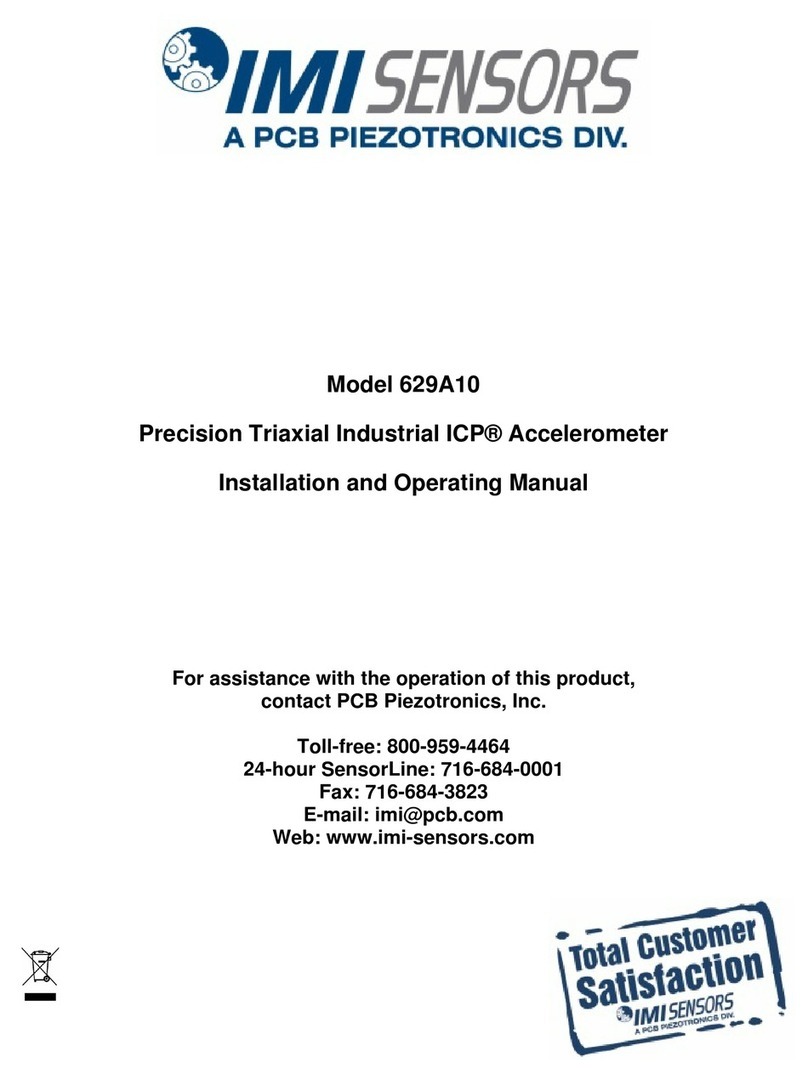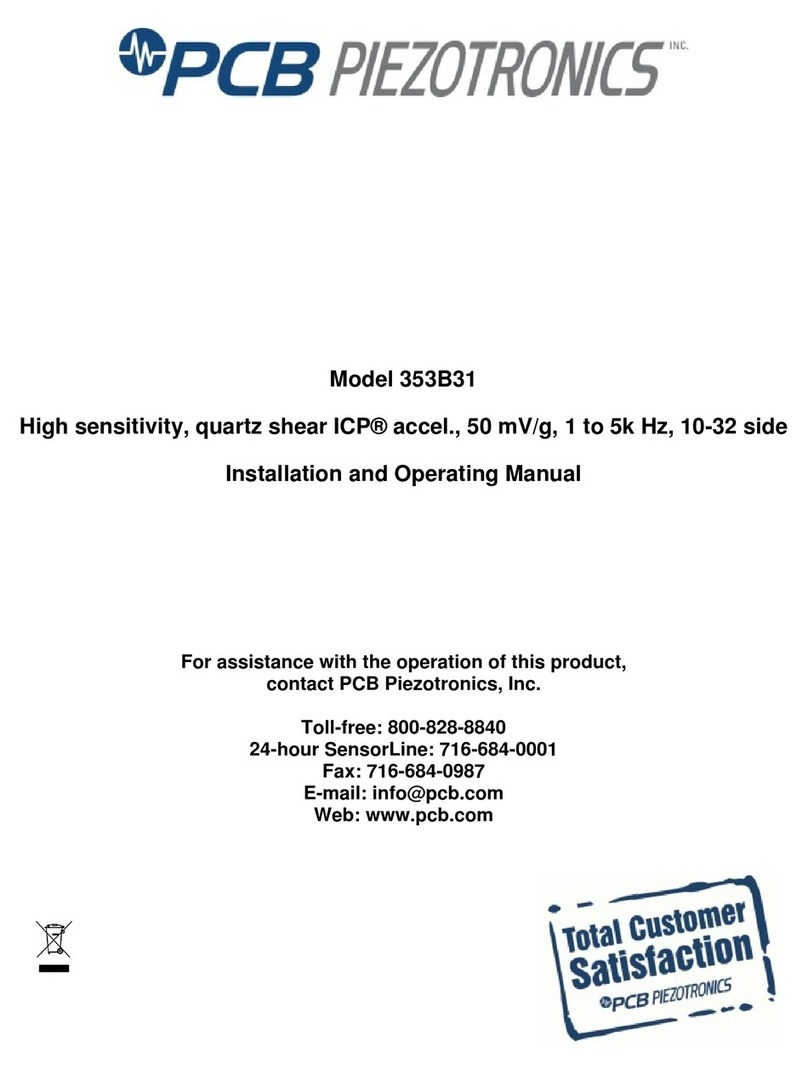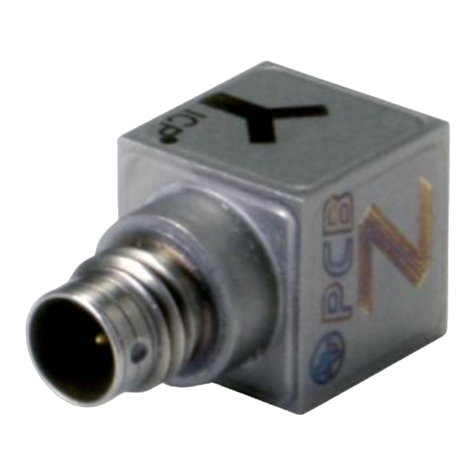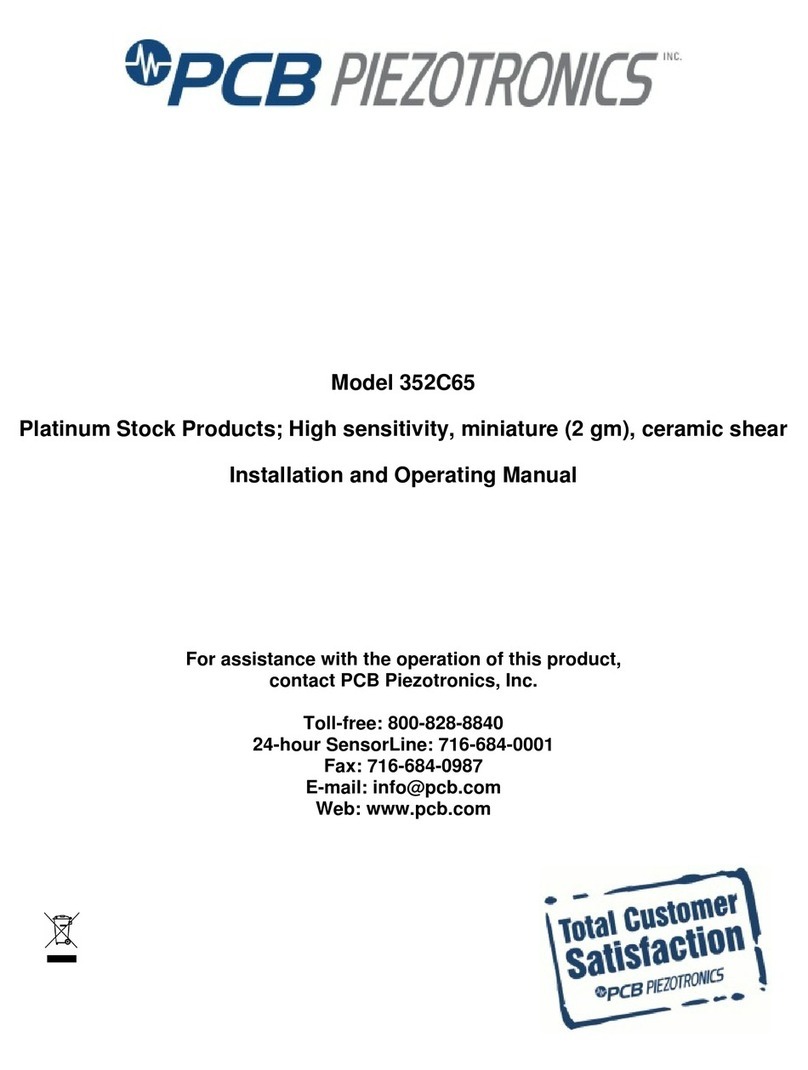
Manual Number: 32650
Manual Revision: D
ECR Number: 42629
3710 series DC Accelerometer Operating Guide
4.0 Typical Measurement System
The 3710 series DC Accelerometers are available in a uniaxial
or triaxial package, with the uniaxial model being the 3711
version and the triaxial model being the 3713 version. The
output signal is routed to follow-on signal conditioning via a
hermetic four-pin receptacle and associated cable assembly;
Model 010 series for the 3711 uniaxial version, and Model
037 series nine-pin cable assembly for the 3713 triaxial ver-
sion. Since the High Sensitivity DC Accelerometers contain a
built-in voltage regulator, they may be powered from virtually
any 6 to 30 VDC power source without adversely affecting
sensor performance. PCB signal conditioners available are
Model 445B01, a single-channel, line powered signal condi-
tioner for the uniaxial 3711series DC accelerometers and
Model 478A05, a three-channel, line-powered signal condi-
tioner for the triaxial 3713 accelerometer. Consult PCB Appli-
cation Engineering for additional signal conditioning options.
The output from the signal conditioner is typically routed to
readout instrumentation such as oscilloscopes or various mod-
el data acquisition instruments.
5.0 Sensor Installation
When choosing an installation technique, be certain to care-
fully examine the different application characteristics that may
affect sensor performance. Characteristics such as mounting
location may limit the use of large mounting blocks or the
amplitude range may necessitate the use of a stud mount rather
than using adhesive. A summary of the recommended mount-
ing methods is provided below.
Stud Mount: Recommended for permanent mount applications
or in test situations that require a rugged or secure installation.
The necessary information, including surface finish, mounting
hole dimensions, and recommended mounting torque for in-
stalling the sensor is listed on the enclosed Sensor Installation
Drawing. It is recommended that an experienced technician or
machinist with good machining capabilities adequately pre-
pare the surface.
Adhesive Mount: Recommended for temporary mounting of
the sensor or when the test object surface cannot be properly
prepared for stud mounting. Wax works well for temporary
mount applications under conditions where the operating tem-
perature will not melt the wax or the acceleration levels will
not dislodge the sensor from the test object. Cyanoacrylate-
based, “quick-bonding” adhesives provide a quick mounting
method, while two-part epoxies can be used for a more secure
mount. To remove an adhesively mounted sensor, it is best to
place an open-ended wrench over the sensor and twist it to
shear the adhesive bond. Striking the sensor with a hammer or
other object may permanently damage the sensor.
Easy Mount Clip: Recommended when frequent installation
and removal of Series 3710 series accelerometers is desired.
The Easy-Mount Clip can either be stud mounted or adhesive-
ly mounted to the test structure. (If adhesively mounting the
clip, detach the sensor from the clip first, as excessive adhe-
sive may creep through the mounting holes and adhere to the
sensor. This will make separation and removal from the clip
difficult.) Once the Easy-Mount Clip has been attached to the
test structure, the sensor can be easily snapped into and out of
the clip. Over time, the Easy-Mount Clip must be replaced as
it will “wear-out” and eventually lose its ability to securely
hold the sensor.
6.0 Powering
The 3710 Series contains built-in microelectronics that will
operate from any PCB Series 445 or Series 478 Sensor Signal
Conditioner. These signal conditioners provide the necessary
voltage and current required for all of the powering options
available on the 3710 series.
The 3710 series may also be powered by other voltage sources
such as DC voltage laboratory supplies, automotive or marine
batteries, or low-voltage supplies designed for powering PC
Board components. If you decide to not use a Series 445 or
478 Series Signal Conditioner, insure that the source provides
power within the excitation voltage range listed on the specifi-
cation sheet for that model. It is important to note that since
the accelerometers contain a built-in voltage regulator, precise
calibration of the power source is generally not required.
7.0 Operation
After the sensor has been installed and the cable connected for
proper operation, there are a couple of measurement points to
take note of:
To take advantage of the DC response of the accelerome-
ter, the readout device must be in a DC coupled state.
Consult the appropriate manufacturer or product manual
for your readout device for details.
Because the 3710 series can measure static (constant)
accelerations, the DC offset voltage will be affected by
the positional alignment relative to the Earth’s gravity. In
other words, when the sensor is mounted perpendicular
with the Earth’s surface, the offset will equal that as spec-
ified on the calibration certificate for “zero-g offset volt-
age.” If the sensor is mounted parallel with the Earth’s
surface, the sensor will be experiencing 1 g of accelera-
tion and the offset voltage will increase by the sensitivity
of the accelerometer.
